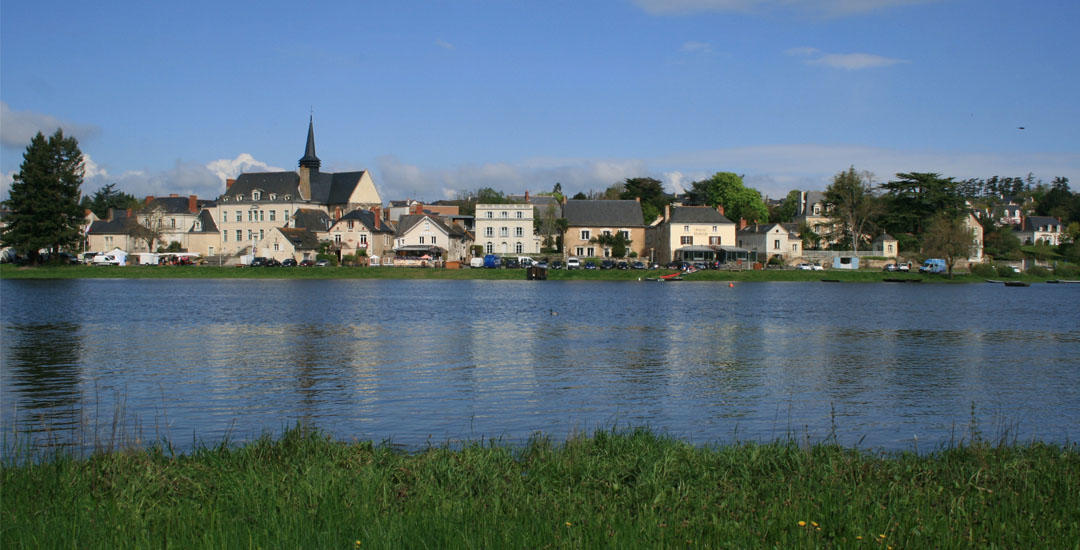- Home
- Know
- A la carte
- Bouchemaine, a village on the River Maine
Bouchemaine, a village on the River Maine
Published on 13 April 2017 - Updated 16 November 2018
A protected site of confluence and popular holiday spot

We catch sight of the village of Bouchemaine when the train goes over one of the bridges crossing the River Maine.
The River Maine is only 11 kilometres long but it gathers together the River Mayenne, River Loir, River Oudon and River Sarthe. It is one of the most important tributaries of the River Loire. Between Angers and Bouchemaine, the river is bordered by vast moist meadows on the left bank and shale hillsides on the right bank. The village developed on one of these hills.
It was a strategic location, after the historic border between Anjou and Brittany at Ingrandes, and so an ideal location for the first toll of the Kingdom. Here the River Loire’s trade was taxed, particularly salt. The salt granary is incidentally still standing, even if it has been transformed into a church. It was also a holiday destination from the Renaissance period. The nobility and bourgeoisie of Angers appreciated the landscape and built their manor houses on the hills. Even the Bishops of Angers established their second home here, the “Abbaye”.
The arrival of the railway further accentuated Bouchemaine’s attractiveness. The hillsides were covered with large gardens, pavilions and rare trees, typical to landscaped parks at the end of the 19th century. And new stone residences were built to make the most of the exceptional panorama over the convergence between the River Maine and River Loire. Today these almost “seaside” pavilions, are interspersed with rural buildings and wine-making chateaus, both large and small properties.
This area has been given numerous types of protection, proving that this landscape is emblematic : one from Unesco but also one from the Natura 2000 network and, most importantly, it’s part of the listed site of the Maine-Loire convergence and the Anjou hillsides.

![Nouvelles Renaissance(s] 2023](/var/storage/images/val-de-loire-refonte/dossier-de-parametrage/pied-de-page/nouvelles-renaissance-s-2023/517479-13-fre-FR/Nouvelles-Renaissance-s-2023_image_largeur220.png)


 Lettre d'information
Lettre d'information
 Facebook
Facebook
 Flickr
Flickr
 Podcloud
Podcloud
 Dailymotion
Dailymotion
 Box
Box
 Slideshare
Slideshare
 Diigo
Diigo

